Closing the say-do gap to find the truth about sustainability

In self-reported research about sustainability, people often say one thing but do another — this is known as the say-do gap. One cause of this is social desirability bias, which is when people give answers that they think people want to hear or behave in ways they believe will make them look good in the eyes of others, rather than being completely honest.
For example, consumers and businesses often claim sustainability is a top priority – but the data doesn’t bear this out. Price, quality, and convenience remain paramount for consumers, and when forced to choose, sustainability still ranks at the bottom of executives’ priorities .
Response bias is a challenge for all self-reported research methods. If respondents can’t help but provide socially desirable answers, then these research instruments will fall short of capturing the right kind of data to predict behaviours. With surveys still pervasive thanks, in part, to the ease in which they can be fielded at scale online, it’s more important than ever that we find ways to mitigate bias and close the say-do gap. What’s more, researchers themselves are often unable to overcome their own cognitive biases.
“Many people under-report embarrassing behaviours and thoughts on surveys. They want to look good, even though most surveys are anonymous. This is called social desirability bias.”
Seth Stephens-Davidowitz, Everybody Lies
How can we, as researchers, expect to uncover unexpected and bias-free insights if we continue defaulting to these familiar but sometimes limited techniques? Do we need to flip the script on how we go about uncovering counter intuitive results?
We did precisely this in a recent research study with the World Economic Forum: Accelerating Sustainability Transformation. To uncover the real barriers to businesses developing more sustainable business models, we turned to neuroscience methods to capture implicit measures. We found that, contrary to prevailing narrative, pursuing sustainability and profitability are not mutually exclusive.
Tackling bias
People are complex. They’re both emotional and rational, so our approach took this into account. Accenture worked with CloudArmy to employ neuroscience techniques that actively engage what Daniel Kahneman calls System 1 thinking: fast, intuitive and emotional. By contrast, people tend to lean on System 2 thinking – which is slow and reasoned – when answering surveys. This leads to challenges like post-rationalisation and social desirability bias.
“To move past the current ESG/sustainability backlash, we need to have a more honest conversation about trade-offs. This requires better data that uncovers not what people and businesses say they care about – but, when push comes to shove, what they actually prioritise.”
Dominic King – Europe, Middle East and Africa lead, Accenture Research
Our starting point was a previous study which found that 58% of executives believe pursuing sustainability will negatively impact financial performance. We wanted to understand what the true barriers underpinning this trade-off were, so we conducted two workshops with more than 140 World Economic Forum ‘next-gen leaders’ in Geneva. In small groups, participants were placed into pre-designed profitability/sustainability trade-off scenarios – and asked both what was stopping the organisation from pursuing the sustainable path and how such challenges could be resolved. We then tested these findings using two neuroscience techniques.
Implicit Association Test (IAT) is a test that measured which barriers were more strongly associated with pursuing sustainability versuss business as usual. As an example, this sorting technique has previously been used by Harvard University in ‘Project Implicit’ to uncover racism in local US organisations like police forces. It allows researchers to capture participants’ deep unconscious responses through cognitive dissonance and the reaction time it takes to agree or disagree with such statements. This type of testing can reliably detect associations with base sizes as low as 50 people per target (barrier) tested.
“IAT enables us to uncover and quantify the hidden, deeper-level influences that can create tendencies and behaviours contrary to stated intentions and motivations.”
Darren Bridger – co-founder and vice-president science, CloudArmy
We recruited 280 senior executives at large companies (more than $500m in annual revenue) from 15 industries and asked them to respond to a series of prompts to gauge how strongly they associate the five barriers with embedding sustainability, as opposed to business as usual (the traditional, tight focus on financial performance). Respondents were asked to associate positively and negatively framed terms (and their synonyms) with sustainable and more traditional business practices (see below).
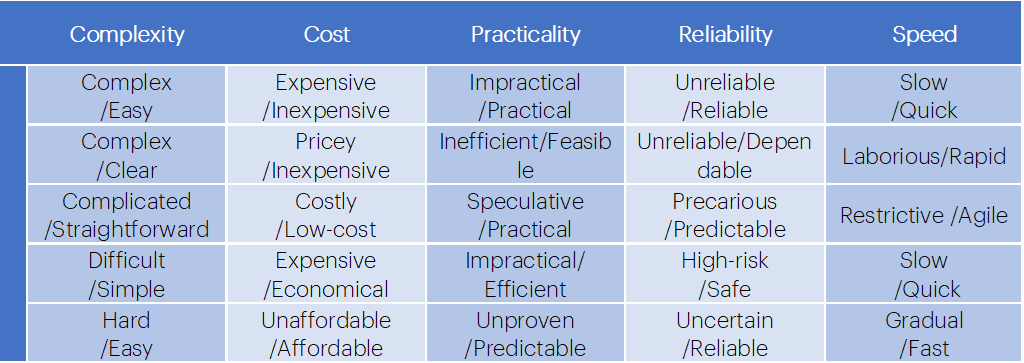
After completing the IAT, we asked the executives to complete another test to gauge attitudes to the solutions suggested by the ‘next-gen leaders’. We developed six statements covering a new approach to setting goals, timelines and success parameters, and three covering more traditional considerations. We then used fast choice preference testing, which calibrates scores by speed of response, to have respondents rate the importance of each for developing and adopting new sustainable business models.
This research design uncovered results that we doubt would have emerged through a standard self-reporting methodology approach. For example, had we asked executives explicitly if cost, complexity, reliability, practicality and speed are challenges to their pursuit of sustainability, they would likely have responded “yes”. However, tapping into non-conscious associations yielded more nuanced, more unexpected results. In fact, executives associate cost and complexity were more with “business as usual” – turning them into drivers for sustainability (see below).
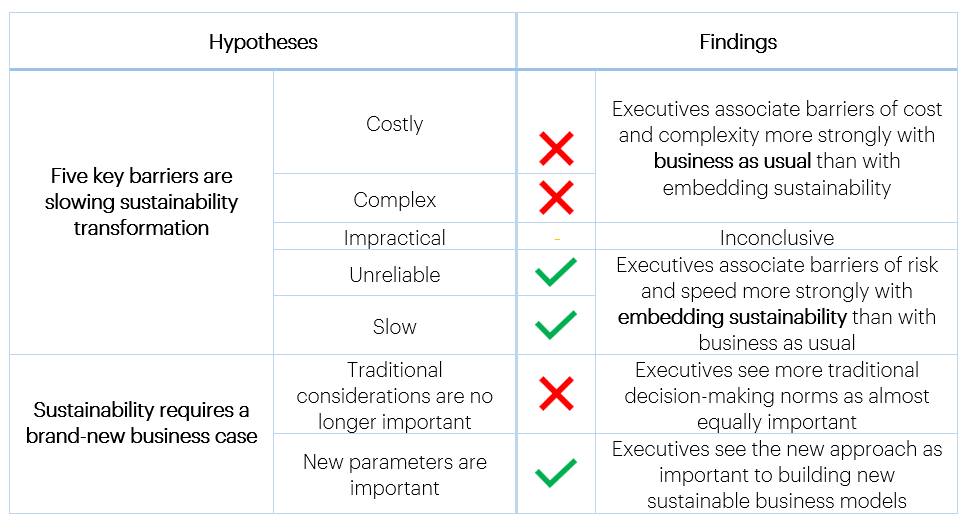
Failing to deliver on sustainability comes with a hefty price tag for organisations, humanity and our planet. We now know that traditional primary research methods alone can only get us so far. To supplement self-reported methodologies and bridge the say-do gap, we need to go deeper and tap into our intuitive side. Neuroscience techniques allow us to do just that, helping to drive meaningful change by getting us closer to the truth on attitudes to sustainability.
Sandra Najem is manager at Accenture Research; Gerry Farkova is specialist at Accenture Research; and Thom Noble is president and CSO, CloudArmy

We hope you enjoyed this article.
Research Live is published by MRS.
The Market Research Society (MRS) exists to promote and protect the research sector, showcasing how research delivers impact for businesses and government.
Members of MRS enjoy many benefits including tailoured policy guidance, discounts on training and conferences, and access to member-only content.
For example, there's an archive of winning case studies from over a decade of MRS Awards.
Find out more about the benefits of joining MRS here.






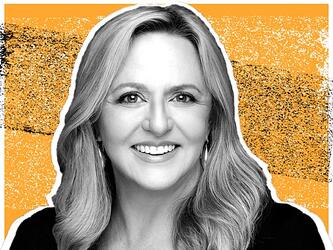
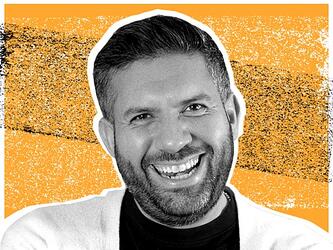
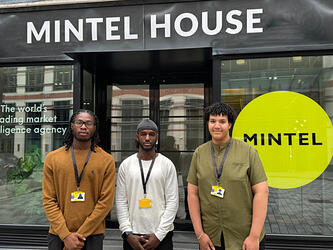

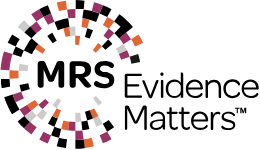


0 Comments